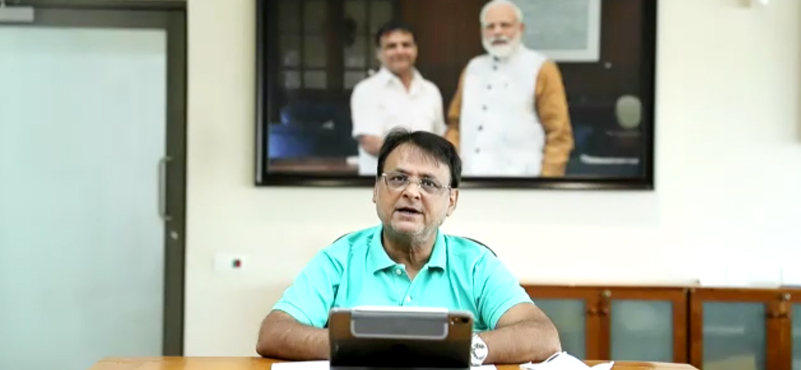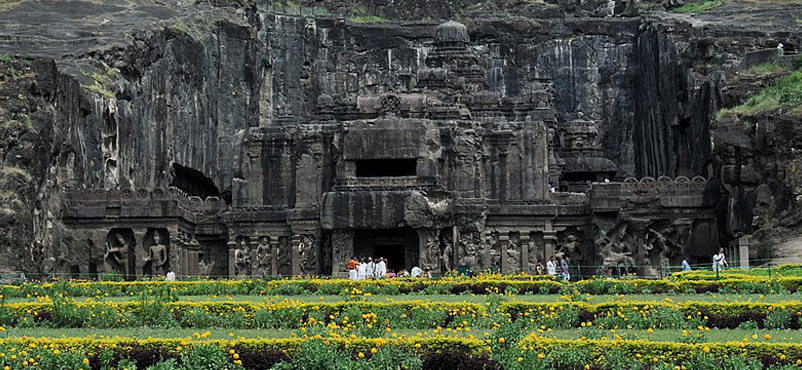CAPA India, in association with PATA India Chapter has released an extensive report on the inadequacies of the industry response to the challenges in promoting inbound tourism into India:
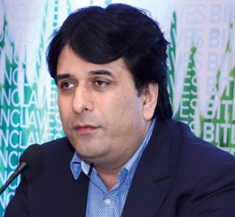
CEO-South Asia, CAPA
The Honourable Prime Minister is India’s leading tourism ambassador.
At every Indian and global forum he inspires the entire Indian tourism industry to take step changes to achieve its potential, and to move away from an incremental approach.
The response of the industry and related institutions has been inadequate relative to the vision.
Based on CAPA’s research in India andglobally, India needs a tourism mission which is realistic, achievable and implementable. It must factor in:
- institutional infrastructure, including governance and delivery
- physical infrastructure (consisting not only of hotels rooms but also civic infrastructure, public transport, urban mobility, competitiveness, cleanliness, tourism experiences) with a focus on carrying capacity
- modernisation of our heritage attractions
- environmental sustainability
- gender sensitivity and safety of female travellers
The culture of change, in line with the Honourable PM’s change, must start with clear definitions (FTAs, FTAs by air, ITAs, which range between 8m and 17m) and better collection of data. Only then can we achieve clarity on our targets.
The Indian tourism industry is largely oblivious to the critical role that aviation play despite the fact that 97.5% of tourists (excl. Bangladesh) arrive by air.
Current international capacity constraints (post 9W closure) is resulting in load factors>90% and high fares may be resulting in tourism arrivals being displaced – this has not been quantified.
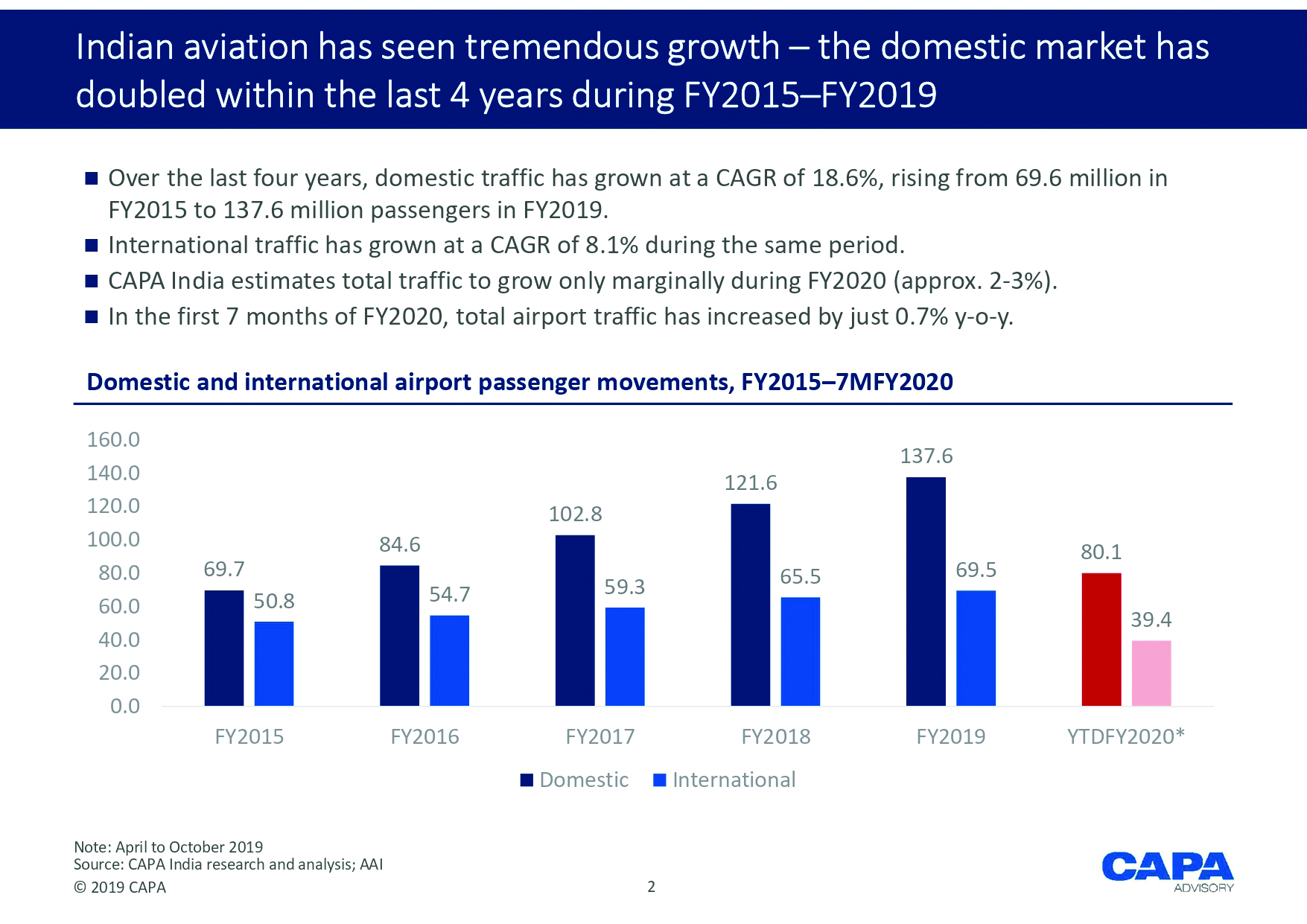
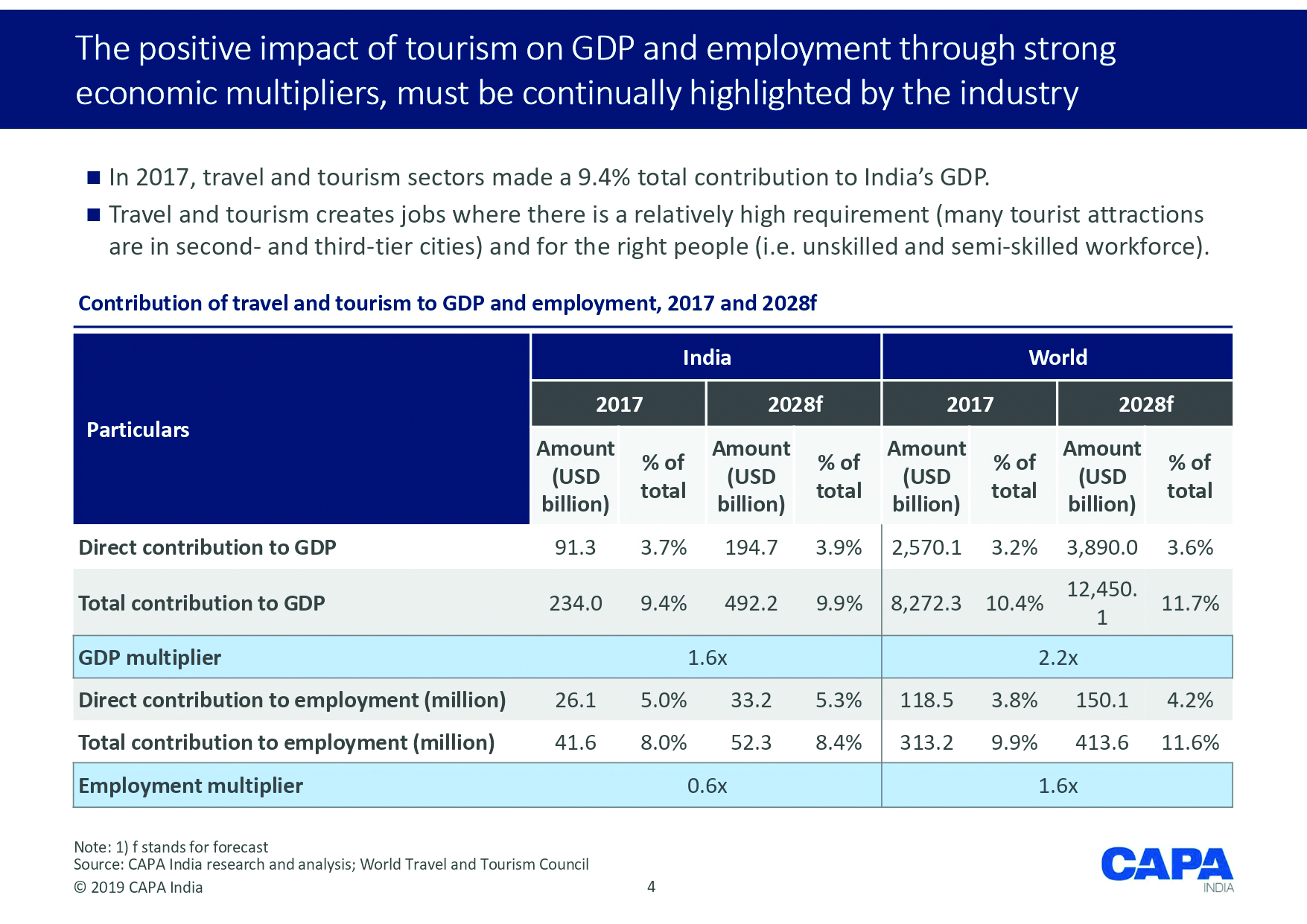
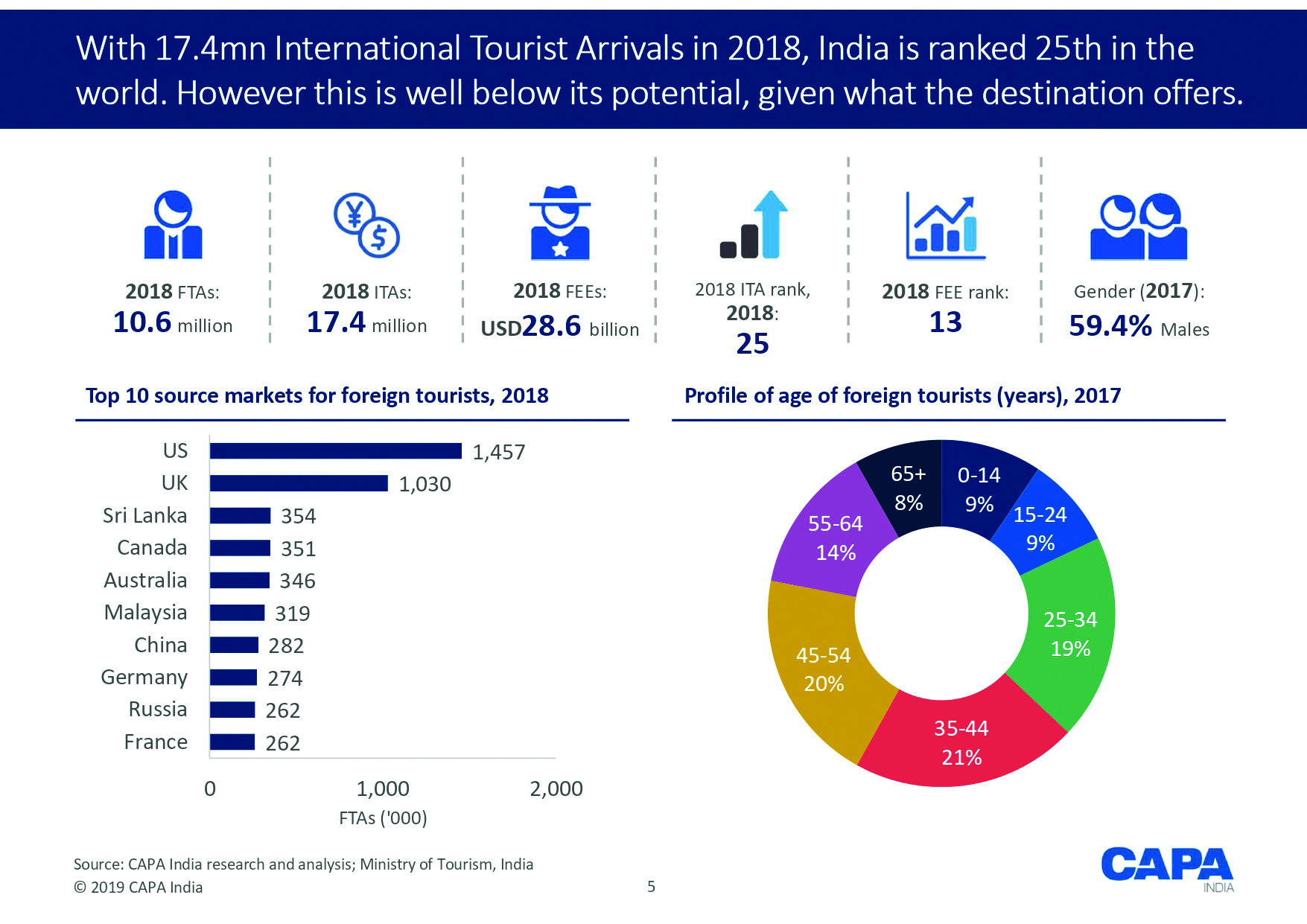
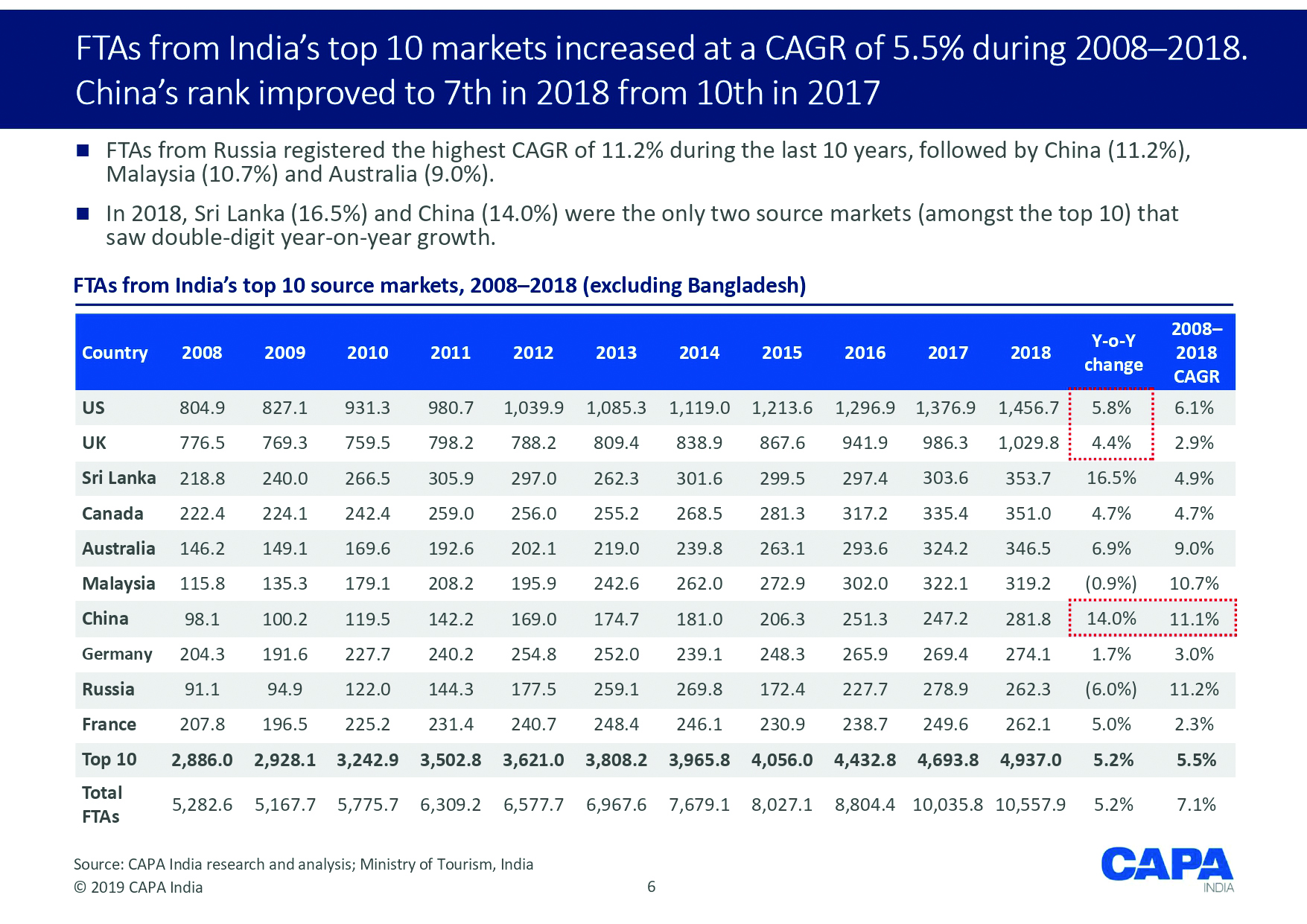
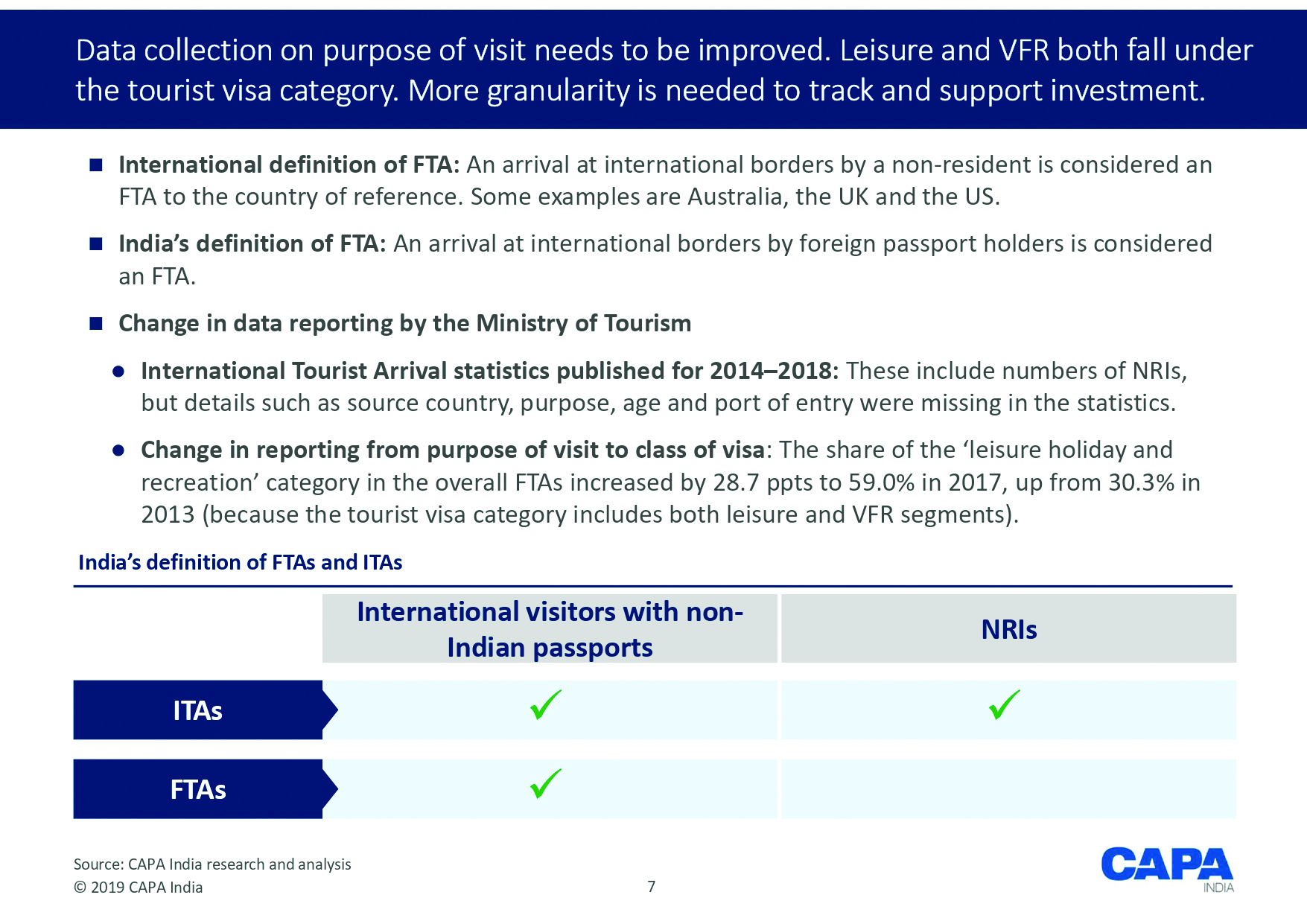
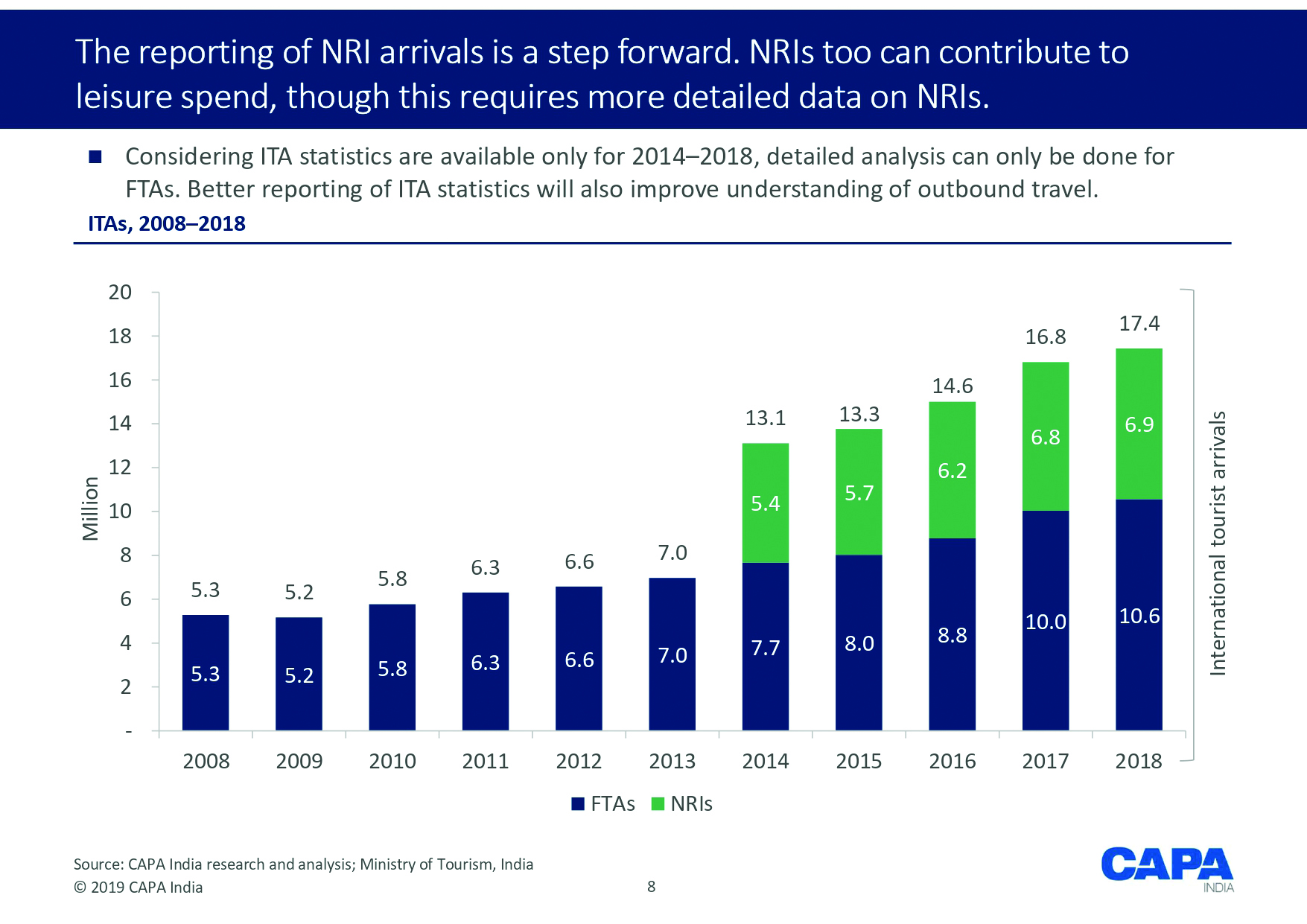
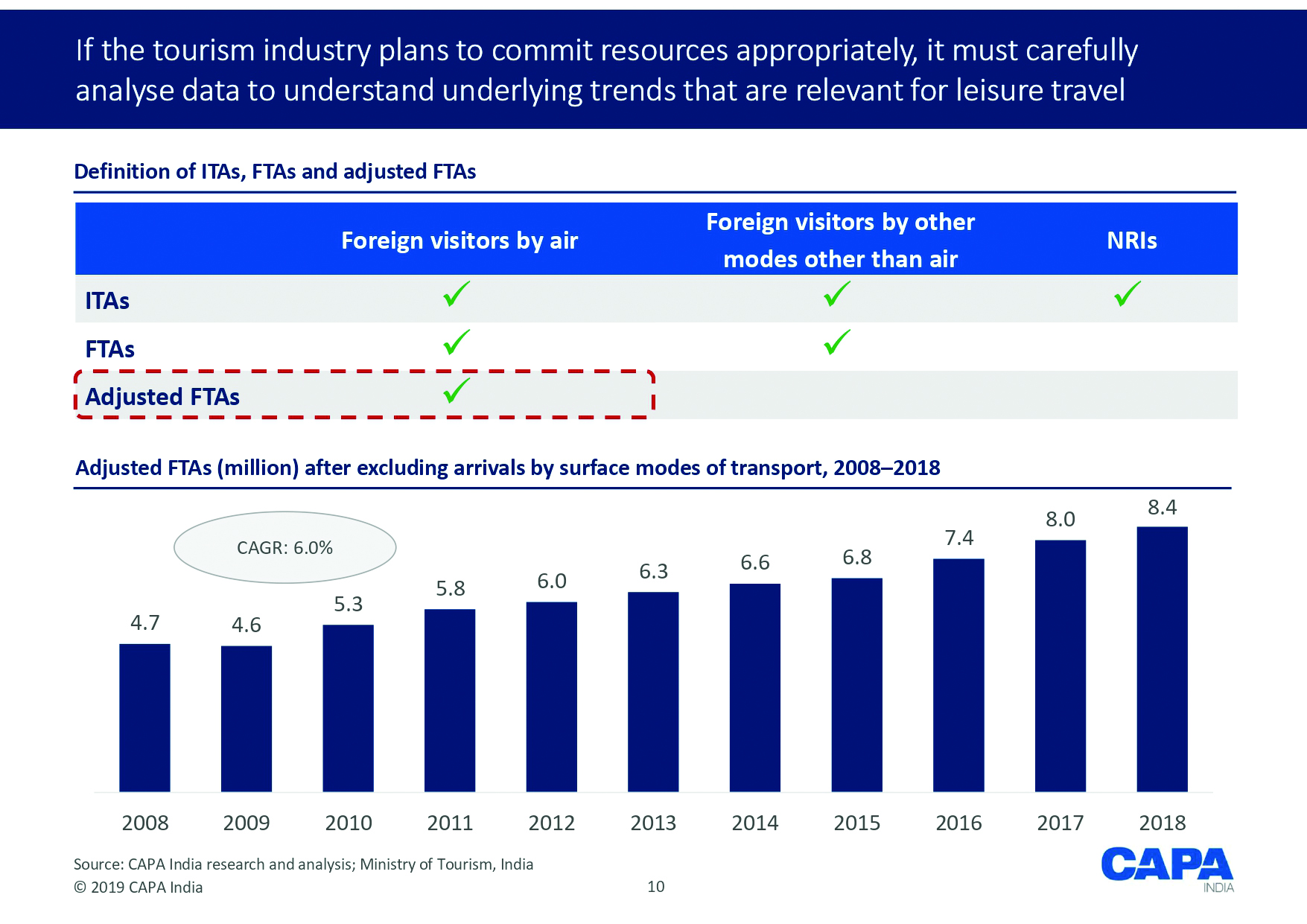
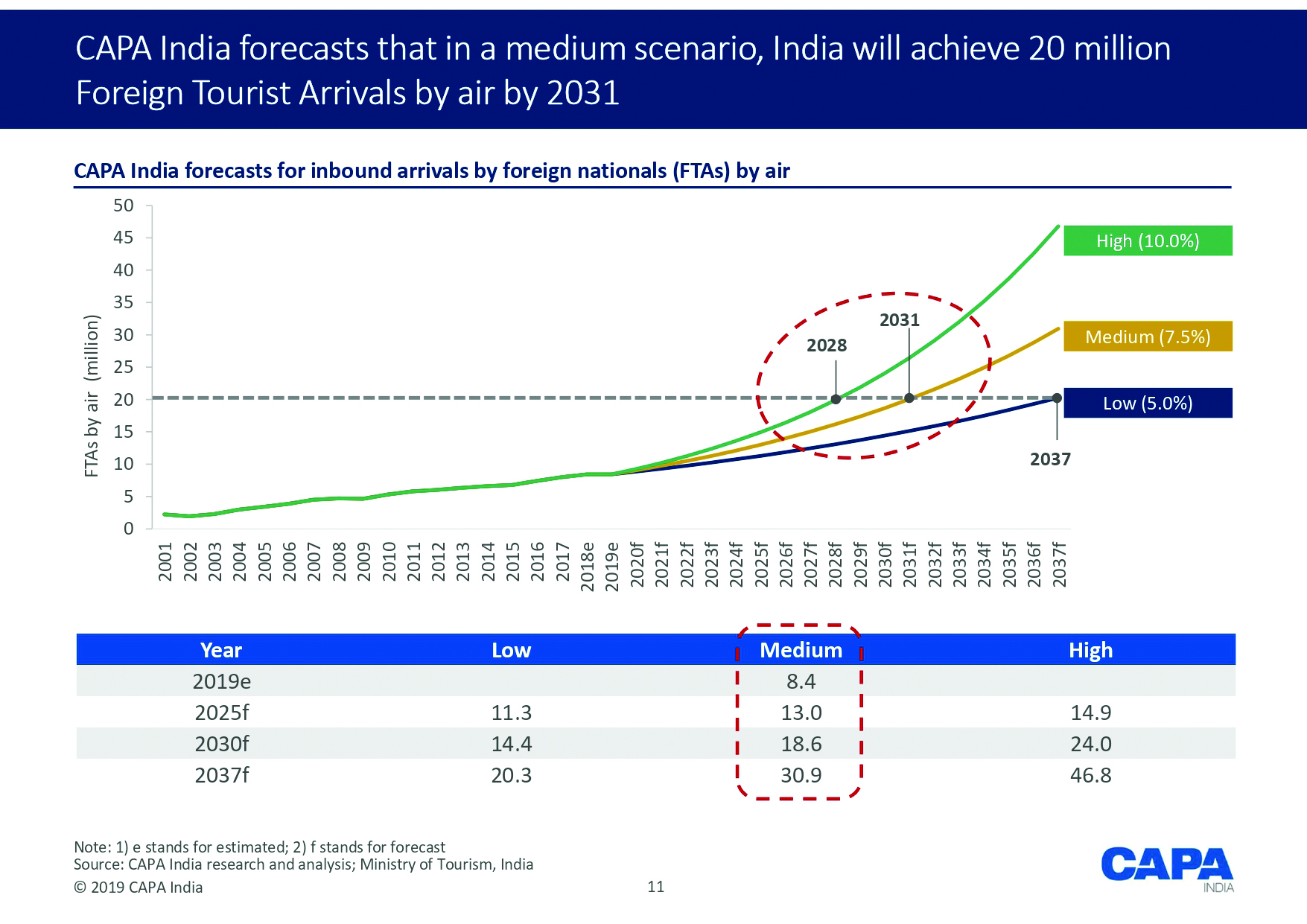
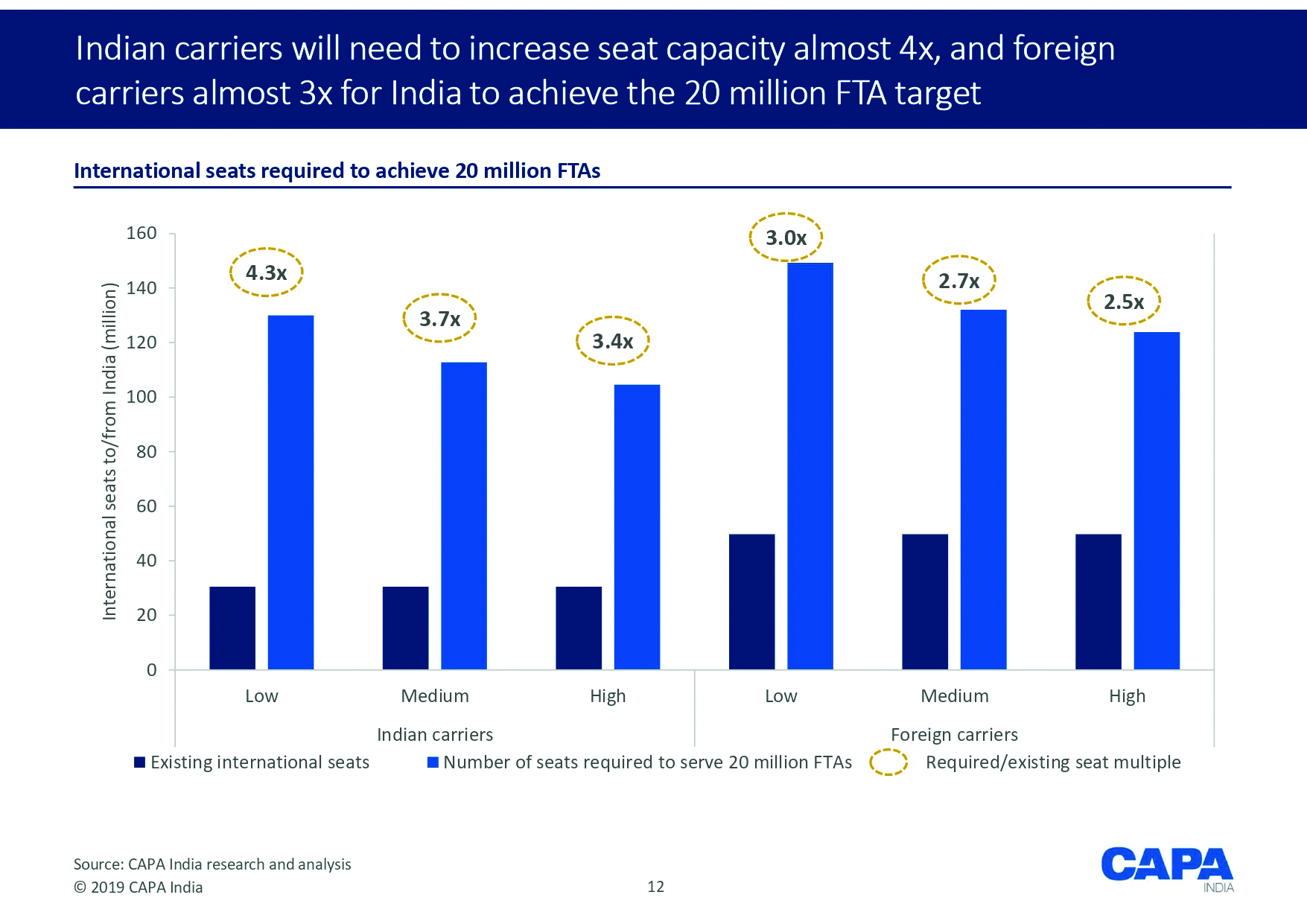

Conclusion:
A step-up change in FTAs will require the highest levels of strategic determination, commitment and coordination by the aviation and tourism industries, to develop the capabilities and to implement the actions require to achieve the objective.
- The institutional infrastructure – in terms of policy, skills, expertise, strategic planning – must be aligned with India’s ambitions, whilst ensuring the competitiveness of the sector and keeping in mind the carrying capacity of the country as a whole, and of individual locations/attractions to ensure sustainability.
- A new governance architecture needs to emerge, to encourage a professional and results- oriented approach to tourism marketing and development. The Government should focus only on oversight and outcomes in line with the national interest.
- Air access will remain a key strategic barrier to achieving the target of 20mn FTAs. The bilateral policy settings need to be aligned with the tourism targets and a viable and profitable aviation industry needs to exist.


